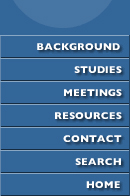Potential Solutions for Achieving the San Joaquin River Dissolved Oxygen Objectives
Authors:
Publication Date:
January
01,
1998
Summary:
The purpose of this report is to help improve understanding of the processes that affect dissolved oxygen (DO) in the lower San Joaquin River and to identify potential management solutions for improving DO conditions in the Stockton Deepwater Ship Channel. The concentration of DO in this reach frequently declines below 5 milligrams per liter (mg/l), especially during the warm months. There is concern that such DO concentrations may negatively affect resident fish and other aquatic life and impede migration of chinook salmon. A recommendation related to immigration of chinook salmon prompted the State Water Resources Control Board (SWRCB) to impose a fall (September, October, and November) DO objectives of 6 mg/l for the reach between Stockton and Turner Cut, in addition to the year-round DO objective of 5 mg/l established by the Central Valley Regional Water Quality Control Board (CVRWQB) for all locations on the San Joaquin River. Developing a strategy for improving DO conditions in the river remains a pressing concern.
This report is based primarily on analyses of field data collected by the City of Stockton, the California Department of Water Resources, and other agencies between 1986 and 1995 and on output from the Stockton water quality model (Schanz and Chen 1993). The central sections describe the factors affecting DO concentrations in the Deepwater Ship Channel and four management options that were assessed. The final descriptive section summarizes recommendations based on assessment of the field data and Stockton water quality output model.
To Obtain:
Main Stacks, Jones & Stokes Associates


